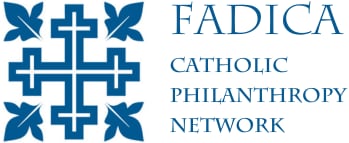Washington, D.C. – – A published, edited, conversation between funders and bishops occurring last month here , urges leaders of the U.S. hierarchy to include Catholic schools among the top priorities that will command church leadership emphasis for the next three years.
The United States Conference of Catholic Bishops (USCCB) has undertaken a new priority setting process whereby five areas of church life will receive special attention and programming that will impact parish and diocesan activities nationwide.
The priorities will be approved this coming fall when the entire hierarchy meets here to set its direction until 2013.
The five priority subjects include: Deepening faith in Jesus Christ; strengthening marriage and sacramental practice; encouraging and celebrating cultural diversity; enhancing efforts on behalf of human dignity; and promoting vocations to priesthood and religious life.
To date, Catholic schools, have not been included in the national action plan and priorities to be approved by the bishops.
Members of Foundations and Donors Interested in Catholic Activities, a consortia of private funders, urged the bishops to consider the accelerating rate of Catholic school closures nationwide and enlist the attention and action of wider sectors of America to save these valuable institutions.
“What do you say to people who feel that these schools are being lost to us as a church and that our institutional capacity in education is shrinking?” FADICA ‘s President, Francis J. Butler, asked USCCB Vice President Bishop Gerald Kicanas, Chairman of the conference’s planning process.
“Why is this not a top priority for the bishops especially when time is of the essence for these schools?” Dr. Butler added.
Some fourteen hundred Catholic schools have closed their doors since the year 2000 due to rising costs and the increasing inability of dioceses and parishes to subsidize their operations.
According to the Center for Research in the Apostolate at Georgetown University there are now 6,165 Catholic elementary schools and 1,213 high schools serving over two million students in the U.S. Annual rates of closure are reaching five hundred institutions per year.
Bishop Kicanas told Dr. Butler and the thirty foundation representatives present for the Washington, DC based discussion, “I think Catholic schools remain a concern of the Conference ( USCCB) certainly, even though they are not specifically identified in terms of this set of priorities.”
Bishop Kicanas acknowledged the challenges facing the Catholic schools but defended the present set of priorities by noting that current offices and committees of the USCCB will continue working on important areas of church life.
“The committee that is responsible for Catholic schools,” he told the foundations , “continues its work, even though Catholic schools are not identified as one of the five priorities. It’s not that these priorities are the only things that will be done in the work of the Conference over the next three years,” the bishops said.
FADICA funders were of the shared belief that the bishops united leadership on the schools is a window of opportunity that is quickly closing for the Catholic church. Dioceses and parishes across the country are reporting dramatic change in the ability of families to stay on top of escalating tuition costs at a time of weak national economic recovery and high joblessness.
Catholic schools are feeling the pressures of diminishing enrollments, stronger competition from new charter schools, which are tuition free, and more Catholic schools are reporting teacher shortages and huge unmet capital needs.
Copies of the Transcript, Setting Church Priorities, is available on this website.


